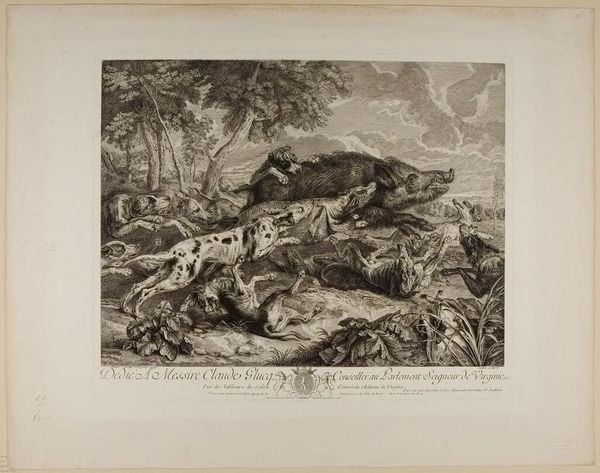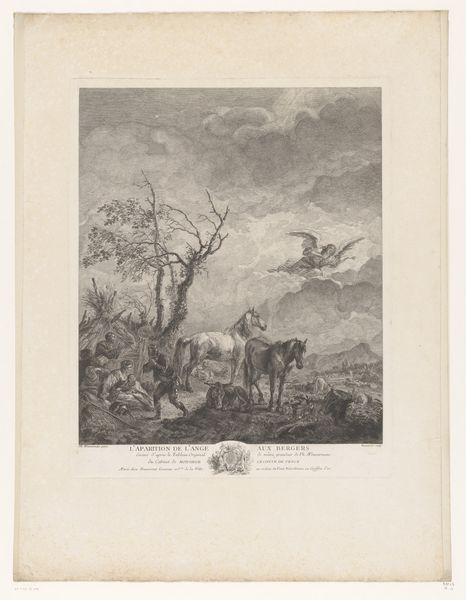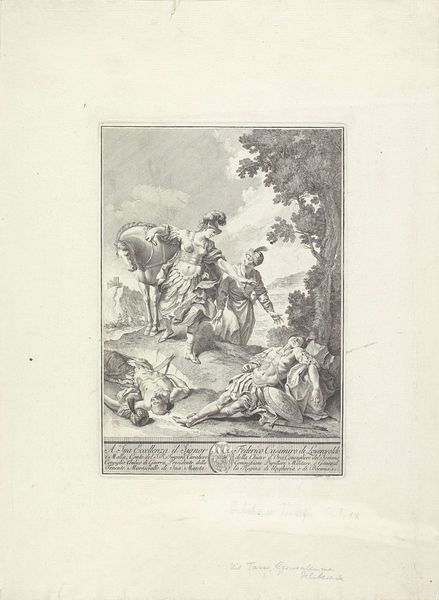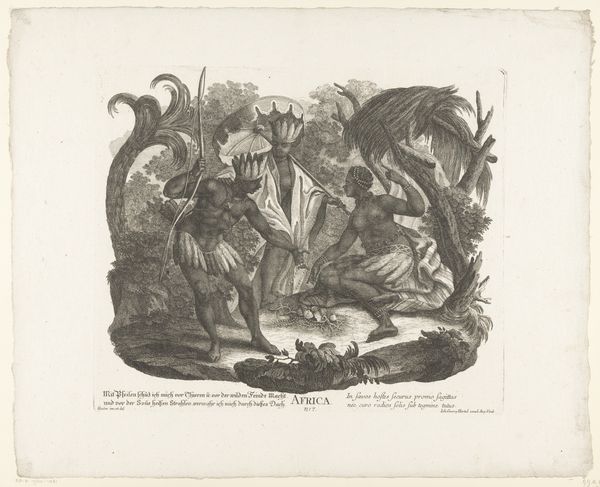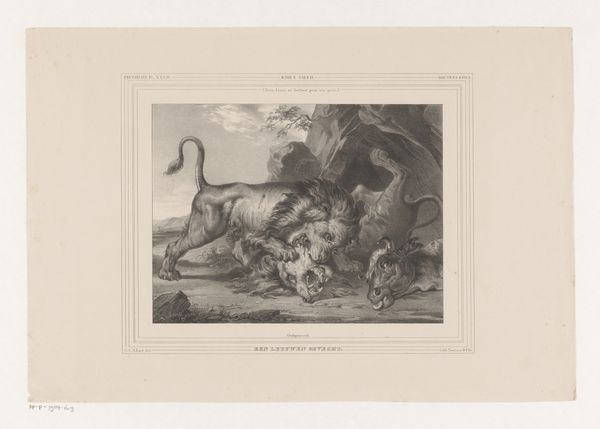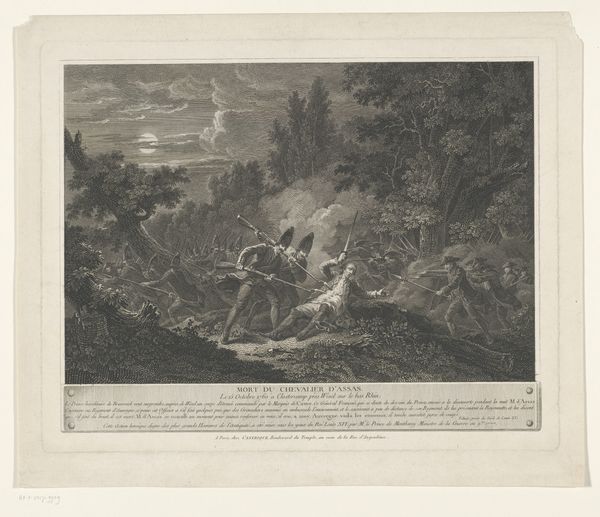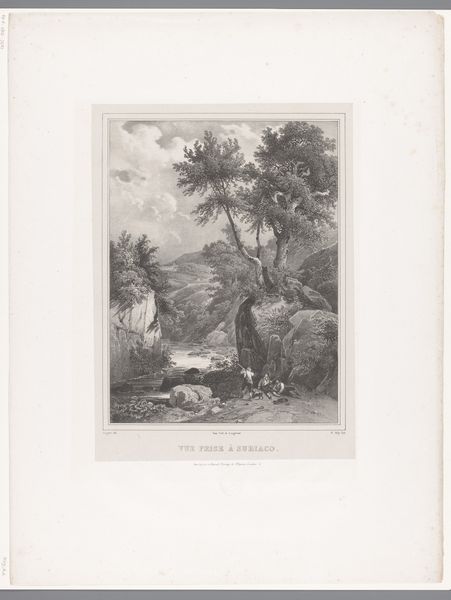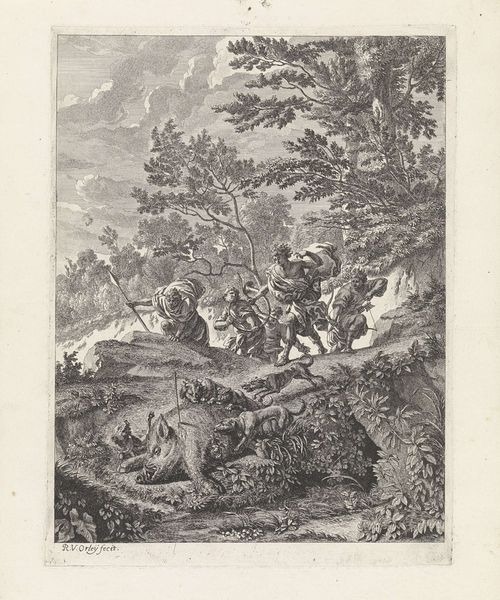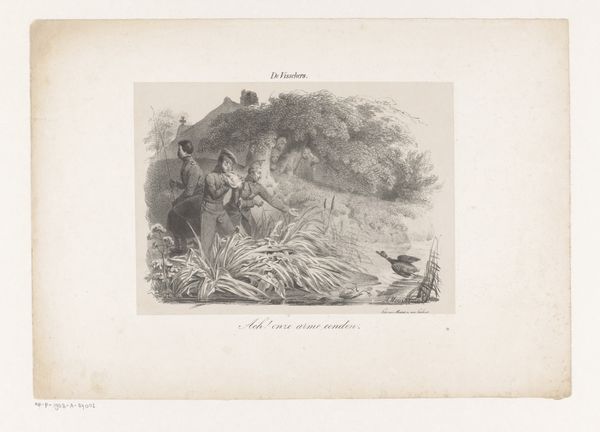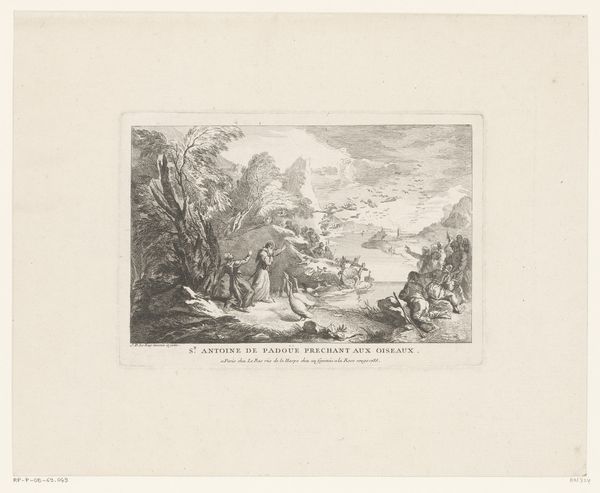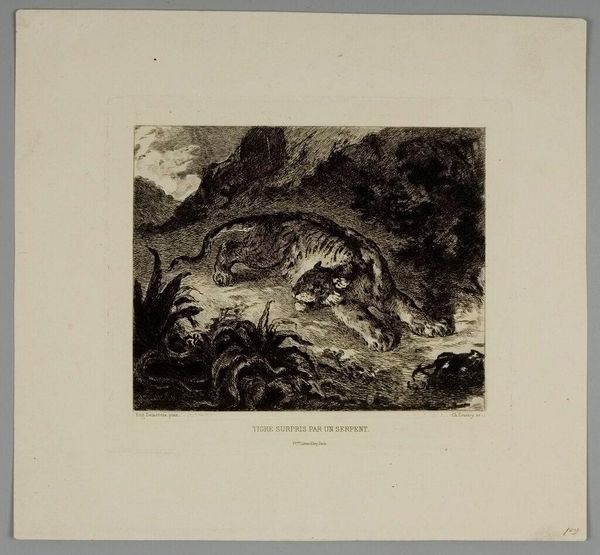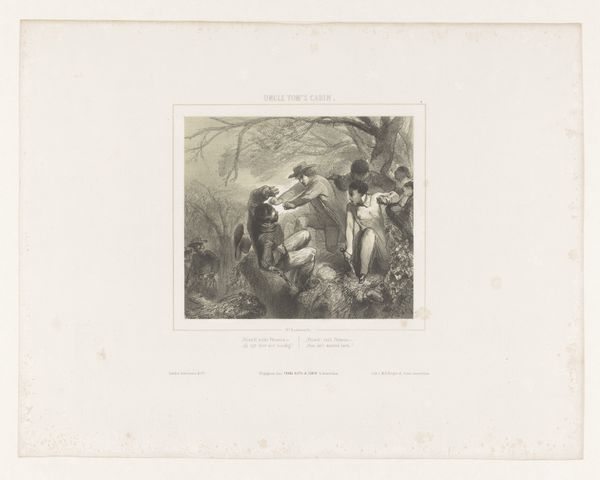
print, engraving
#
narrative-art
# print
#
landscape
#
figuration
#
romanticism
#
history-painting
#
engraving
Dimensions: height 384 mm, width 544 mm
Copyright: Rijks Museum: Open Domain
Curator: Welcome! We’re standing before Gijsbertus Craeyvanger’s 1833 engraving, "Hertenjacht," or "Deer Hunt," currently held in the Rijksmuseum's collection. What catches your eye first? Editor: Immediately, it’s the dynamism. There's such frantic movement captured in this black and white print; the desperation of the deer, the relentless energy of the hunting dogs. It almost feels violent. Curator: Indeed, that's characteristic of its time. It fits into the broader context of 19th-century Romanticism, where artists often explored intense emotions and the power of nature, though within a specific social framework. Hunting scenes were particularly popular with the aristocracy. Editor: I can imagine this adorning some grand estate, a visual justification for blood sport as a leisure activity of the elite. It reflects societal power structures where humans dominate animals for pleasure. Curator: Certainly. Consider how the institution of the hunt itself was codified, often exclusive to those with land and social standing. Craeyvanger here isn't just depicting a chase; he's reproducing an image laden with established class privileges. The very act of portraying it and placing it within an art institution upholds that historical context. Editor: It's not just class; the composition positions humans as dominant, erasing the agency of the animals in this life or death scenario. Looking closer at the suffering rabbit on the ground. It is not glorious; it is suffering and vulnerability laid bare, literally beneath the hooves of the hunt. Curator: And yet, stylistically, we see the artist rendering the deer with a certain nobility. He's framed in an almost heroic stance mid-leap, conveying a sense of wild freedom against the inevitable encroachment of civilization. Editor: But to what end? Highlighting the aesthetic drama of the deer, rather than centering any narrative of the cost to the animal population in general. It's about framing that act in an accessible art form that has appeal through its spectacle, but fails to be more inclusive of nature. I still sense a stark commentary of class. This wasn’t sport to the deer, or the rabbit! Curator: The act of depicting something as visually engaging serves to make it accessible within artistic and societal conversations, however contentious. It's crucial that viewers critically examine these pieces to acknowledge how those artistic renditions might sanitize historical events. Editor: Precisely! It encourages deeper discourse beyond its visual charm to reveal underlying themes of power, exploitation, and perhaps most subtly, humanity’s complex, often contradictory, relationship with nature and class structures. Thanks, Curator. Curator: And thank you. Viewing this engraving not just as a depiction of nature but an assertion of societal dominance adds a vital layer to understanding its historical resonance.
Comments
No comments
Be the first to comment and join the conversation on the ultimate creative platform.
